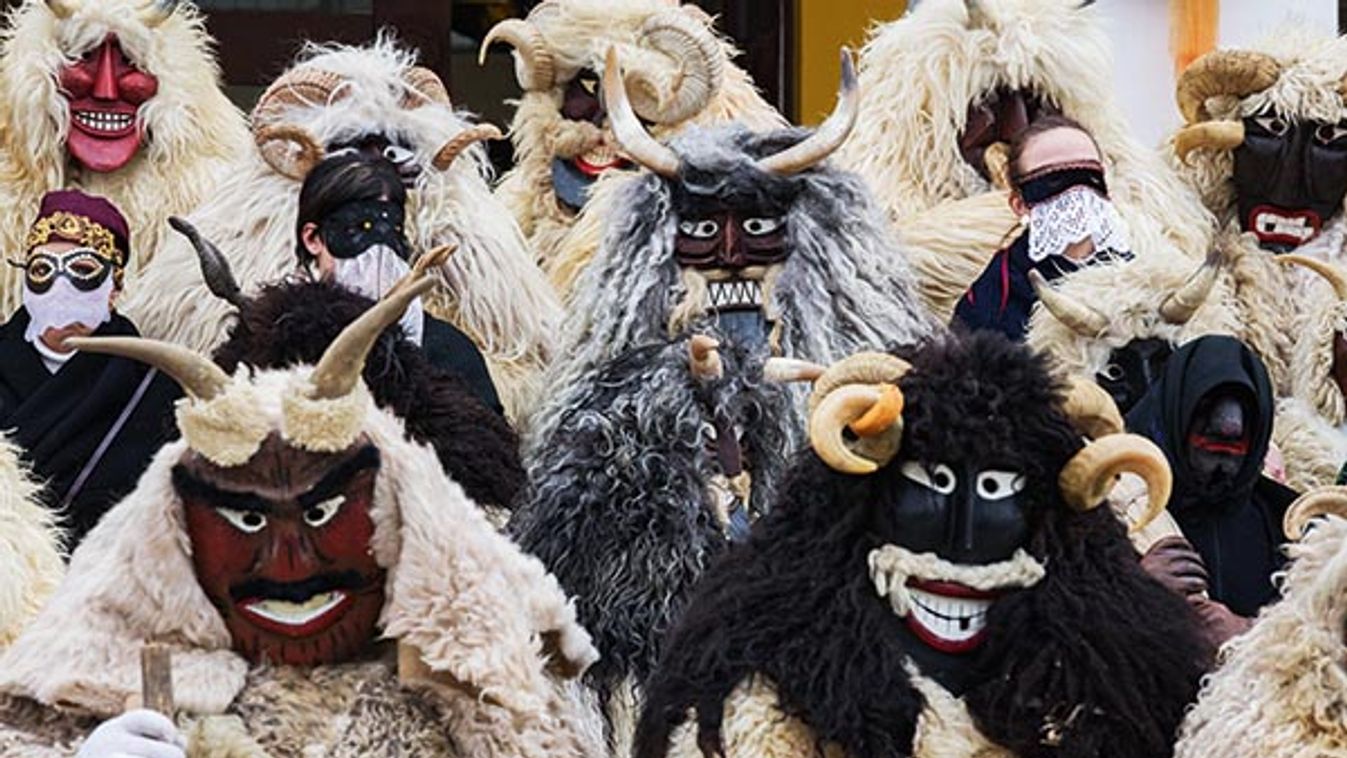Ilyen rémpofák űzik a telet - Megmutatjuk!
A medvék elhúzódó hideget jósolnak, a busók mindent megtesznek azért, hogy a telet mihamarabb elűzzék. Ahogyan tették azt a legenda szerint a 1600-as években a törökökkel: a sokácok a Mohács-szigeti mocsárvilágból – megunva a rabigát – az éj leple alatt csónakokkal keltek át a Dunán, hogy ijesztő álarcok mögé bújva, maguk készítette kereplőkkel űzzék el a babonás törököket.
Kép: 04 Mar 2014, Mohacs, Hungary --- The BusĂł festivities at Mohács in southern Hungary are a six-day carnival in late February to mark the end of winter. The BusĂłs are dressed in scary-looking costumes (traditionally men) wearing wooden masks and big woolly cloaks. The festival is multifaceted, including a children's costume contest, a display of the art of mask carvers and other craftspeople, the arrival of more than 500 busĂłs in rowboats on the Danube for a march through the city alongside horse-drawn or motorized fantasy vehicles, the burning of a coffin symbolizing winter on a bonfire in the central square, and feasts and music throughout the city. The tradition originated with the Croatian minority in Mohács, but today the busĂł is a general emblem of the city and a commemoration of the great events of its history. More than a social event, the carnival is an expression of belonging to a --- Image by © Zsolt Repasy/NurPhoto/NurPhoto/Corbis, Fotó: Zsolt Repasy/NurPhoto

Bár a sokácokat csak azután telepítették a térségbe, hogy a török uralom alól felszabadult a város, a busójárás eredeti szokását valószínűleg nekik köszönhetjük. A busójárás így a tavaszváró-télűző ünnepek közé tartozik, ami más népek szokásaival is rokonságot mutat – ilyen termékenységet varázsló ünnep a riói vagy velencei karnevál is.
Idén Mohácson minden eddiginél több maszkos vonul majd fel a látványosság kedvéért: 44 csoport 1100 busója és 100 egyéb maskarása gondoskodik az érdeklődők szórakoztatásáról február 12-e és 17-e között.
Bár a hat nap alatt harminc helyszínen reggeltől estig hetvennél is több program közül válogathatunk (lesz táncház és busólakodalmas, maszkfaragó foglalkozás és számos kiállítás), a legfőbb események vasárnap, február 15-én várhatók. Ekkor kelnek át a busók csónakjaikkal a Dunán, vonulnak fel a városban, teszik vízre a farsangi koporsót, gyújtanak hatalmas máglyát.

